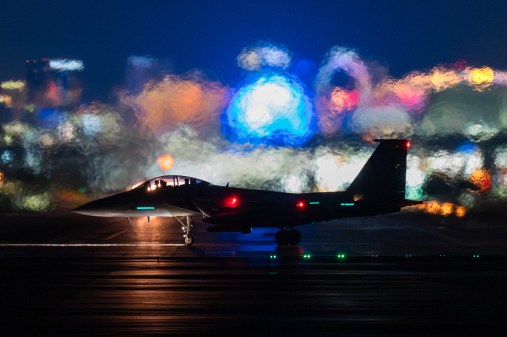Brown: Future space-based ISR will require ‘paradigm shift’ for air battle management

From new aircraft to space-based assets, the Department of the Air Force is entering a new era of how it conducts airborne surveillance and command-and-control missions. That means how the department define roles and responsibilities for air battle management will likely need a “paradigm shift” moving forward, according to Air Force Chief of Staff Gen. Charles “CQ” Brown Jr.
In the past, a service member specializing in air battle management had expertise that was tied to specific airframes — such as the aging E-3 Sentry airborne early warning and control aircraft and the E-8 Joint Surveillance Target Attack Radar System (J-STARS). Some of these platforms will be phased out of the fleet in favor of more modern systems that will enable Joint All-Domain Command and Control (JADC2), a Pentagon-wide effort to better connect all the services’ sensors and shooters under a more unified network.
Brown, who has been tapped by President Biden to be the next chairman of the Joint Chiefs of Staff, emphasized that even with changes in platforms and concepts, the Air Force will still need experienced battle managers to work through missions.
“The thing we got to think through is how we restructure our organizational construct of putting that expertise in the right place,” he said Wednesday during a webinar hosted by the Mitchell Institute. “And whether it’s in the air control squadrons that do more of this versus them being tied to an airborne platform — those are the things we’re looking at to be able to make sure we’re putting that experience in the right place.”
In particular, Brown noted that the Air Force will have access to more space-based intelligence, surveillance and reconnaissance data in the future as a portion of the E-8 J-STARS fleet is set to be replaced with a space-based Ground Moving Target Indicator (GMTI).
In the Space Force’s budget request for fiscal 2024, it is requesting $242.6 million to kick off the brand new program, known as Long Range Kill Chains. The initiative is intended to expand the GMTI capability to track surface targets in contested environments where current J-STARS platforms are unable to fly.
“Space-based GMTI system will provide actionable information on adversary surface targets to the warfighter through the Advanced Battle Management System (ABMS) as an integral part of Joint All-Domain Command and Control (JADC2) concept. The [Space Force] is working with the Air Force and the Intelligence Community (IC) in a complementary way to design, develop, and deploy space-based GMTI systems,” budget documents stated.
Adding more space-based surveillance tools will also likely create more observational data for officials to work with than previous platforms did, creating new aspects for the air battle management mission, Brown said.
“We’ve got to look at not only how we do the battle management asset, but also how we do the processing, exploitation and dissemination [of data] that’s associated with it as well. And that’s a paradigm shift. This is an area that we’ve got to be willing to change,” he said.






